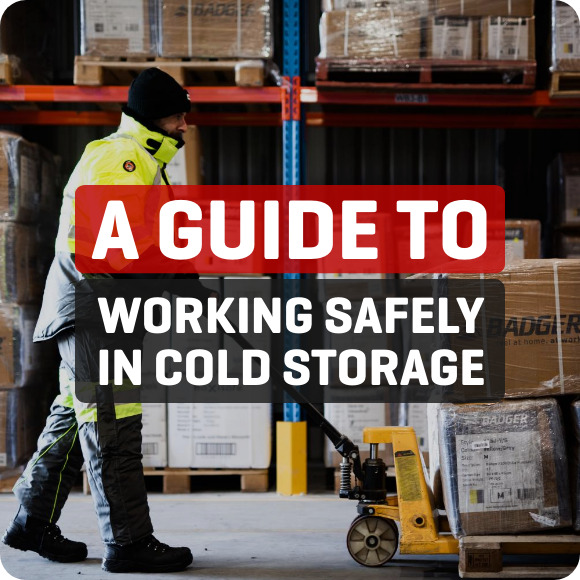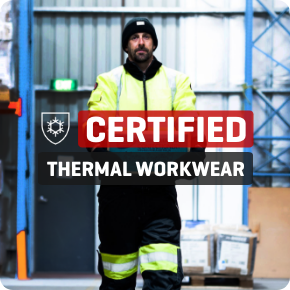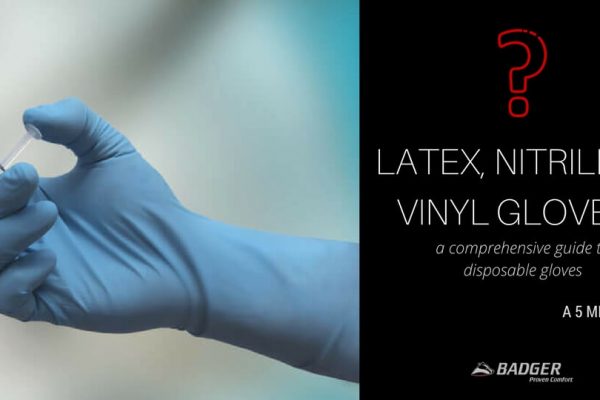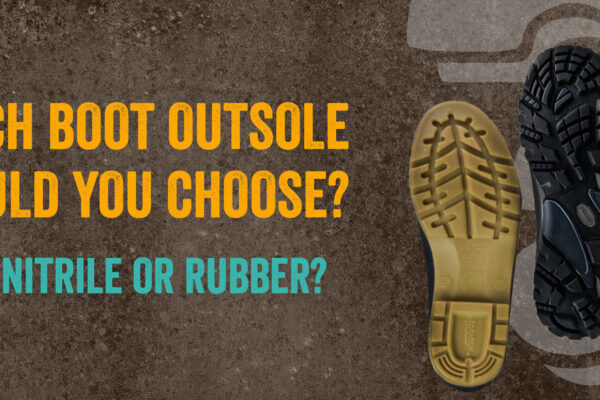Watch your step! 5 tips to avoid slipping at work
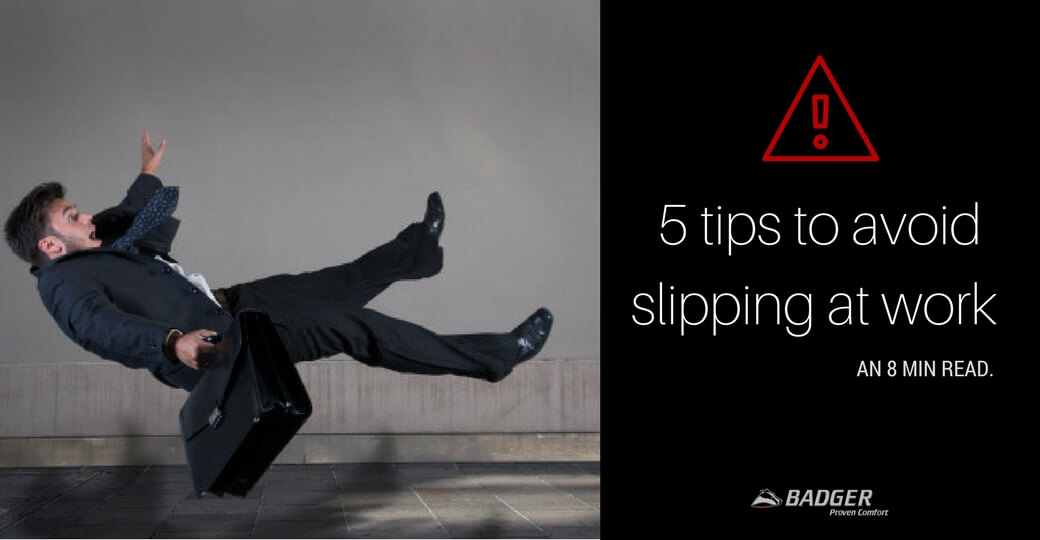
Slips, trips and falls (STFs) are the second greatest cause of injuries in the workplace. STFs can lead to a range of injuries to the knees, ankles and back and while most don’t cause critical injuries, they all waste time and resources for employers, and importantly, they’re generally preventable. Implement these measures in your workplace to ensure downtime from STFs is minimised, and staff productivity maximised!
Quick Summary:
✓ Wear footwear that is slip resistant.
✓ Identify & remove risks in your work environment.
✓ Establish SOPs to quickly eliminate risks.
✓ Maintain matting.
✓ Create awareness.
1. Wear footwear that is slip resistant
Let’s start by clarifying what footwear minimises slip risk, seen as that’s kind of Badger’s scene! Its important to realise not all “safety” shoes provide slip resistance – in fact some can be quite the opposite! Its also important to realise different surfaces require different designs and features for a shoe to grip effectively. A boot that’s very safe and slip resistant on a wet surface may not provide any grip on a dry, loose surface!
Slip resistance comes from the heel and sole of the shoe.
Heel Design:
The back of the heel should be slightly rounded instead of square so the surface area of the sole in contact with the ground is maximised while walking. And no, the safety sign on the left is not a very good example of this!
Sole Design:
When it comes to the sole, the level of slip resistance is determined by the material it’s made from and the design of the tread pattern. While it may seem elementary, its important to check your shoes sole is made from modern materials such as urethane, PVC or rubber, rather than vinyl or leather, which are generally more slippery – especially after being worn down a bit. The closeness and depth of the sole’s tread pattern is what influences the level of its slip resistance. Below are specific sole design recommendations for the main slippery surfaces experienced in workplaces.
- Fluids & Liquids – footwear typically should have a closely-packed, well-defined tread pattern in softer material with deep cleats on a flexible flat sole. This ensures maximum surface area is in contact with the ground.
- Loose solids – footwear typically should have a more open well-defined tread pattern with wider channels, deep cleats and a flexible sole.
- Ice – footwear typically should have spikes or studs that will “bite” into the ice (but may be slippery on other hard surfaces). For icy surfaces such as in cold storage rooms, SRC rated shoes are generally most suitable.

Check if the shoes you have or are looking at have any slip resistance information. If they are tested to EN ISO 20344:2004, they may be marked:
- “SRA” (tested on ceramic tile with diluted soap),
- “SRB” (tested on smooth steel with glycerol), or
- “SRC” (tested under both conditions)
This is useful information and can give you some idea of the shoe’s non slip capability. However, note that while SRC footwear has the highest rating for slip resistance, it is not the best option for all situations.
Obviously, the comfort and fit of the shoe is also vital, as it prevents fatigue meaning the individual is more aware of their surroundings and is less likely to slip. To ensure your shoes are the correct size, check out our sizing charts and information here.
2. Identify & remove risks in your work environment
Many slips are caused by hazards created by the design and condition of the workplace environment, and the composition of the walking surfaces are especially significant. Does the flooring material itself have sufficient slip resistance and is it being properly cleaned? Is it in good, safe condition, or are there raised edges, sharp cracks or loose sections? Does the level or slope of the surface suddenly change? All these questions are vital to consider and cover off the primary checks you must make to ensure the walk ways in your work place are minimising the chances of slippage.
The level of lighting within your workplace must also be considered. Dim or inadequate lighting can increase the chances of slips or falls as they are not aware of their surroundings. A value of at least 160 lux is recommended for general working areas, but more may be required for certain activities or building types.
Objects or substances surrounding the walkways can also cause STFs, and should be removed if they could potentially pose a hazard. In food processing or manufacturing businesses, ingredients residue or build-up can be especially lethal (not to say highly unhygienic!). Any sort of spill, whether it be food related (blood, oil, grease) or chemical, can be highly slippery and should be dealt with quickly and properly according to your company’s SOPs (more on that next).
3. Establish SOPs to quickly eliminate risks
SOPs are standard operating procedures, and are important as they allow your company to quickly identify and remove hazards or risks that could increase slips, trips or falls. Develop these for anything that could cause STFs, from cleaning floors, to servicing mats, cleaning equipment or taking out the garbage. Keep these SOPs where your workers can easily access them, so they don’t become another useless document floating around! If you’re an employee, make sure you know where they are so you can act fast and intelligently if a hazardous situation should come up!
4. Maintain the matting at your workplace
While mats are part of the work place environment, which we discussed in point 2, they can create an almost ironic hazard, so they deserve particular care and attention. Mats are often used in food processing businesses to try reduce slips, trips or falls. However, as they age and deteriorate corners can lift or the base can wear down and begin to slide around, making mat itself the slip hazard! Check the “tread” on the mats as you do a set of tyres to ensure matting prevents slips, rather than causes them!
5. Create awareness
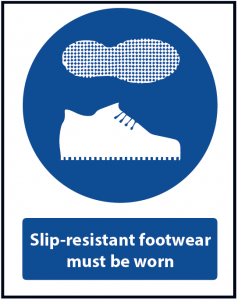
As with any health and safety issue, create awareness and remind workers and employees to remain vigilant and conscious of slip hazards. Do so verbally and with signage, especially in areas of your work place where there is higher risk or where spills are common.
Taking the effort to be educated and aware as to these 5 points will help you avoid slipping, tripping or falling, and hence, avoid injury and time away from work. If you’re an employer, preventing your employees from slipping means reducing down time and improving productivity.
So yes, it’s certainly worth “watching your step”!
